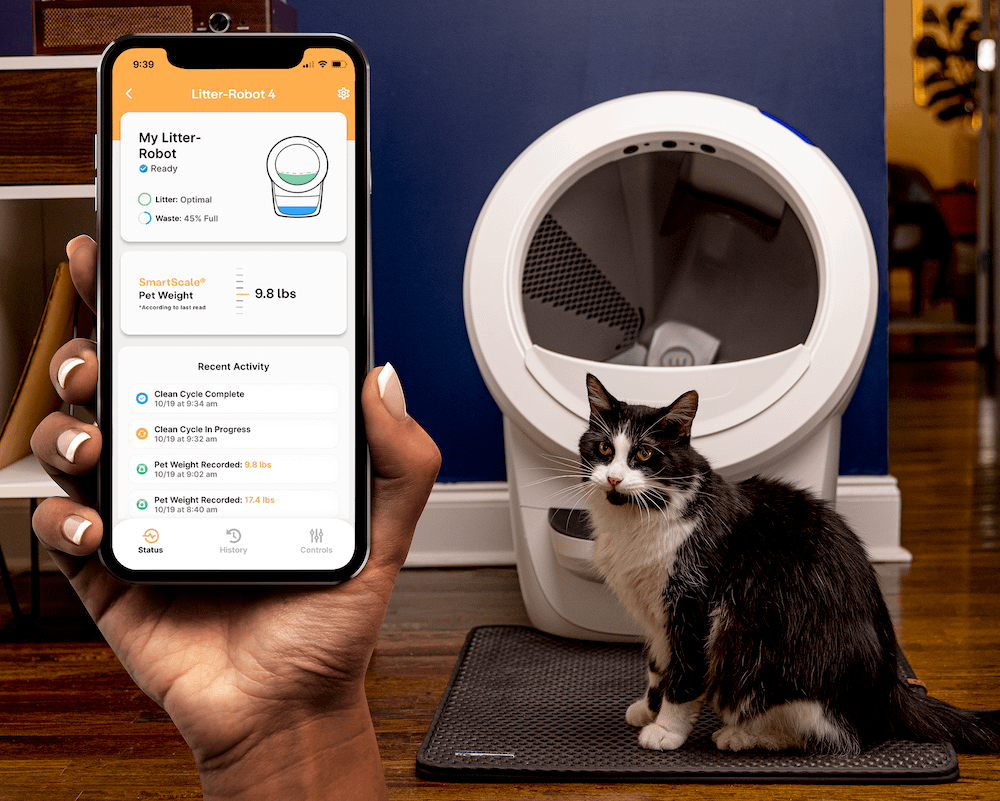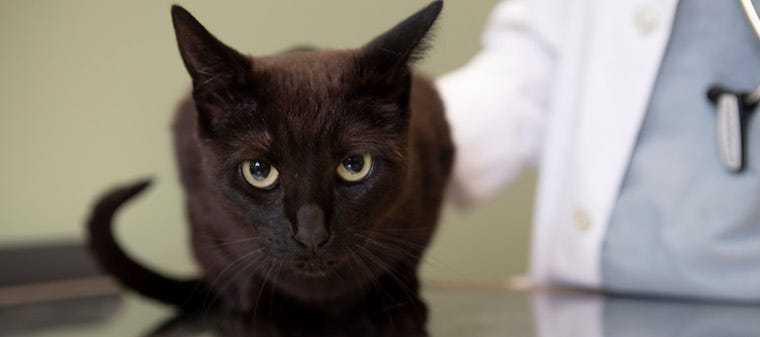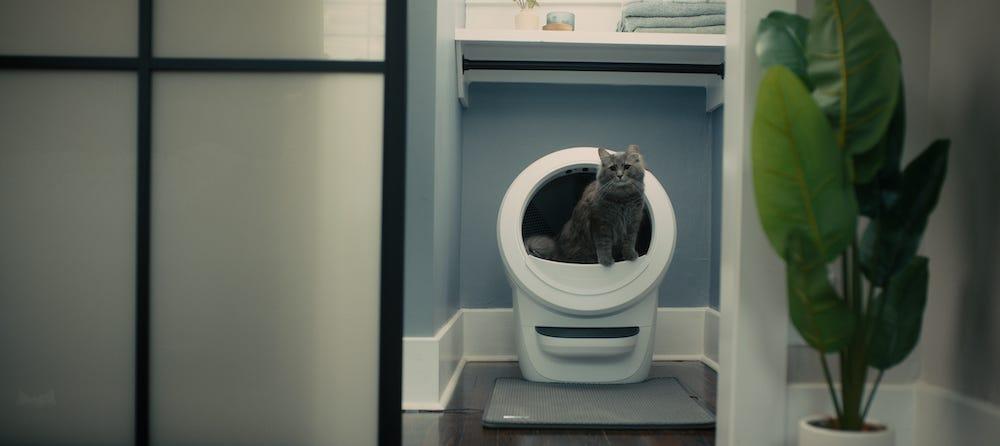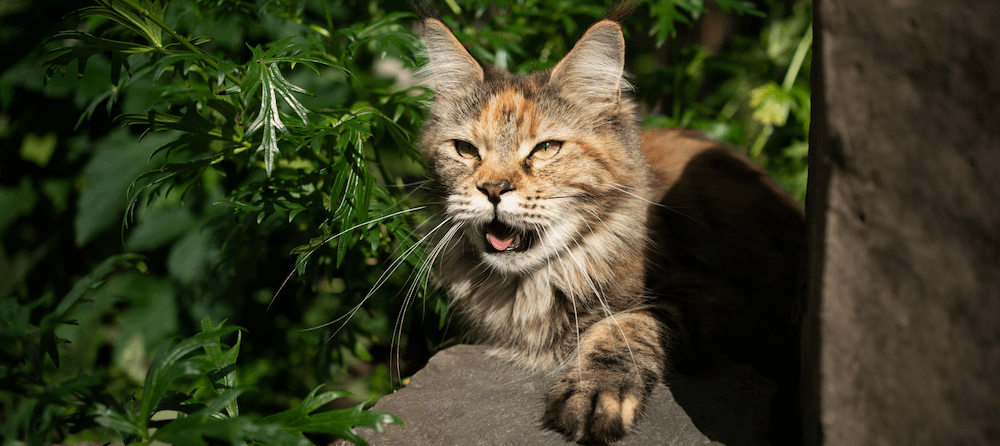If you’re a cat parent, it’s tough to know whether your cat’s symptoms call for an immediate trip to the emergency vet or if it’s okay to wait for a regular appointment. In this post, we’ll walk through warning signs it’s time to go to the ER, demystify the emergency vet experience, and share recommendations for how to prevent common illnesses in cats.
If you’re worried, I’m worried
Cats are notorious for hiding illness, which can make it tricky to detect issues early. This trait dates back to their wild ancestors, big cats, who conceal signs of weakness to avoid becoming targets for predators or losing their social standing within a pride. Domestic cats have inherited this survival strategy, often suppressing signs of illness until they’re truly sick.
Because of cats’ stoic nature, even subtle changes in behavior—like hiding, eating less, or sudden lethargy—can indicate a severe underlying condition.
What seems minor to us may signal a life-threatening issue in a cat. That’s why it’s crucial to act quickly and take them to an emergency vet at the first hint of unusual behavior. I say this to all of my clients: “If you’re worried, I’m worried because you know your cat best.”
SOS signals: Warning signs your cat is crying for help
If you notice any of the following symptoms, it’s time to seek emergency care immediately:
- Difficulty breathing (open-mouth breathing, wheezing, gasping, or coughing)
- Inability to urinate (especially in male cats, which could indicate a dangerous urinary blockage)
- Seizures or uncontrollable tremors
- Trauma or bleeding that won’t stop
- Severe lethargy (not eating or drinking for several days; prolonged hiding)
- Repeated vomiting or diarrhea lasting more than 24 hours
- Toxin or foreign body ingestion (lilies, human medications, string, ribbon, etc.)
- Excessive drinking or lying by the water bowl
Even subtle signs like hiding, loss of appetite, or sudden aggression can indicate an underlying issue that warrants attention from your vet.
Common health emergencies in cats and what to expect
Below are common emergency issues, how quickly they need to be addressed, and their typical treatment and recovery timelines:

Urinary blockages (especially in male cats):
- Urgency: Critical, life-threatening if untreated within 24-48 hours.
- Treatment: Urinary catheterization to relieve the blockage, followed by IV fluids and pain management. Some cases require surgery.
- Recovery: 2-4 days in the hospital; monitoring for recurrence; lifestyle changes may be needed to prevent future blockages.
Toxin ingestion (e.g., lilies, human medications):
- Urgency: Immediate care required, typically within 1-2 hours of ingestion.
- Treatment: Induce vomiting, gastroprotectants, hospitalization with IV fluids, and supportive care based on the toxin.
- Recovery: Depends on the toxin, but several days to weeks of monitoring may be needed.
Severe trauma (falls, car accidents, bite wounds):
- Urgency: Immediate treatment is required.
- Treatment: Stabilization with pain meds, oxygen, IV fluids, X-rays, possible surgery for fractures or internal injuries.
- Recovery: Varies based on the injury, ranging from weeks to months.
Respiratory distress:
- Urgency: Critical—requires emergency oxygen therapy and diagnostics to identify the underlying cause.
- Treatment: May involve oxygen supplementation, medications, and hospitalization.
- Recovery: Depends on the cause; can range from days to ongoing management for chronic conditions.
Foreign body obstruction (e.g., ingestion of string, hair ties):
- Urgency: Immediate if the object causes gastrointestinal blockage.
- Treatment: Surgery to remove the object.
- Recovery: Typically 7-10 days, with follow-up care to ensure healing.
How often do cats experience emergencies?
Throughout a cat’s life, certain emergencies become more likely at different stages:
- Kittens: Prone to ingestion of foreign objects and toxic substances due to curiosity.
- Adult Cats: More likely to experience trauma or urinary issues.
- Senior Cats (10+ years): At a higher risk for chronic conditions like kidney disease or heart issues, which can lead to emergencies.
As cats age, vet visits become more frequent. For healthy adult cats, annual checkups can suffice, but senior cats benefit from visits every 6 months. Cats with chronic conditions may require even more frequent visits to monitor their health.
Recognizing signs your cat might be dying
In extreme cases, certain symptoms could indicate that a cat is nearing the end of their life. These might include:
- Prolonged lack of movement
- Difficulty breathing
- Pale gums
- Extreme weakness
- Body temperature that feels colder than usual.
If you suspect your cat is in their final moments, it’s important to get them to a vet as quickly as possible to ease their suffering and discuss humane options like euthanasia if necessary.
Demystifying the emergency vet experience: What to expect
Walking into an emergency vet can feel overwhelming, but knowing what to expect helps ease the stress. Most emergency clinics, like Veterinary Emergency Group (VEG), offer services designed to provide transparency and comfort for both you and your pet. At VEG, you can call ahead to speak directly with a veterinarian, which helps you determine if an immediate visit is necessary.
Once you arrive, the clinic’s open-concept layout allows you to stay with your cat throughout the entire process, from diagnosis to treatment. Being present not only comforts your pet but also keeps you informed every step of the way. Whether it’s your first time or a return visit, the goal is to make sure you feel empowered and involved in your cat’s care.
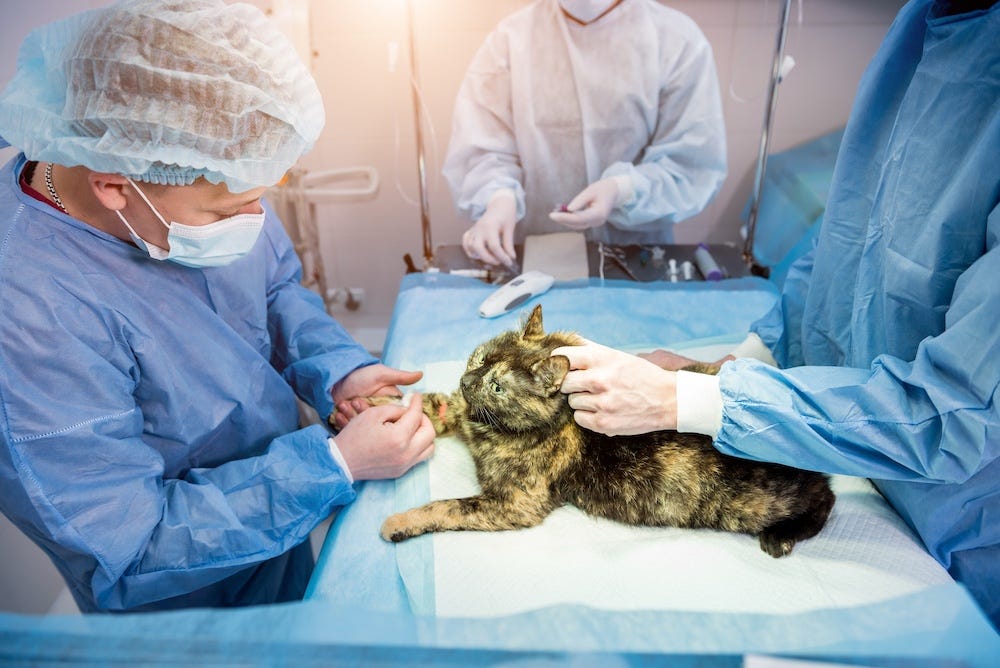
Are emergency vets more expensive than regular visits?
Yes, just like with human ERs, emergency vets are typically more expensive because they offer round-the-clock advanced care, specialized equipment, and immediate treatment. You can expect the cost of a visit to range from $200 to $400 for the initial exam, with additional costs for diagnostics and treatment. For example:
- X-rays or ultrasound: $400–$800
- Bloodwork: $200–$500
- Surgery: $5,000–$10,000
- Hospitalization per night: $1,000–$3,000
Many emergency vet hospitals will provide transparent estimates before care is started. Without pet insurance, these fees can add up quickly.
Planning for emergency vet costs
If the cost of emergency care feels overwhelming, don’t panic—there are options:
- Animal shelters and clinics: Some shelters have low-cost emergency programs or partnerships with local vets.
- Payment plans: Many emergency clinics offer financing options like CareCredit, which allows you to pay over time.
- Veterinary colleges: Many offer discounted services since it’s a learning institution.
Planning ahead by setting aside an emergency fund or investing in pet insurance can also provide peace of mind and financial support when emergencies arise.
How much does pet insurance cover?
Pet insurance can significantly ease the financial burden of emergency care, but coverage varies by provider and plan. Here’s what you can generally expect:
- Accident-only plans: Cover around 70-90% of emergency treatment costs for injuries or accidents.
- Comprehensive plans: Typically cover 80-90% of costs for both accidents and illnesses, including diagnostics, surgeries, and medications.
- Limits and deductibles: Many policies have annual coverage limits (e.g., $10,000-$20,000) and deductibles ranging from $100-$500.
For example, a surgery costing $5,000 might result in an out-of-pocket cost of $500 to $1,000 with insurance, depending on the policy's terms. Without insurance, emergency bills can quickly add up. It’s important to understand that most pet insurance plans do not include regular preventive care health checkups.
Monitoring your cat to prevent emergencies
When it comes to your cat’s health, it’s always better to err on the side of caution. Monitoring subtle changes, knowing your closest veterinary ER, and being aware of emergency costs will help you respond quickly when your kitty needs it the most.
With tools like Litter-Robot 4 to monitor your cat’s bathroom habits and weight, you can catch potential issues early and make informed decisions about their care. Cats use the bathroom on average 3-4 times a day. Using the Whisker app, you can monitor for increased or decreased litter box usage. These are signs to call a veterinarian because your cat could have feline lower urinary tract disease (FLUTD), a urinary tract infection, or a urinary obstruction—which is a true emergency!
Emergencies are stressful, but being prepared helps ensure your feline friend gets the care they need, right when they need it.
A previous version of this article was written by Justine Lee, DVM
Sources:
- Top Cat Emergencies Across the U.S.
- How To Know When To Take Your Cat To the Emergency Vet
- How Much Does a Vet Visit Cost?
- How Much Does a Vet Visit Cost?
- Feline Urethral Obstruction
- Feline lower urinary tract disease (FLUTD)
- Urinary Obstruction in Male Cats
- Dyspnea (Difficulty Breathing)
- Feline Respiratory Emergencies

